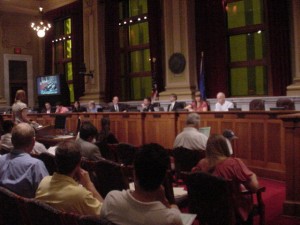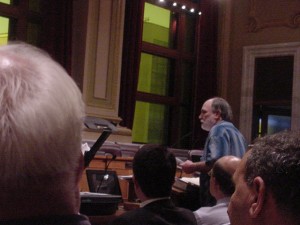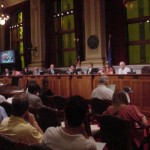Mpls. Planning Commission HERC discussion
June 26th, 2009
On Monday, the Minneapolis Planning Commission had another hearing and deliberated the HERC garbage burner expansion. The discussion of the Planning Commission was enlightening — here it is (it’s big, patience), just go here and click “download” and in time, it’ll be there:
After which, of course, they voted it DOWN. Denied. No permit.
Thanks to the Planning Commission for taking a close look at this project!
A win! HERC denied permit by Mpls Planning Commission
June 23rd, 2009
WE WON A SMALL WIN — A START ON PREVENTION OF EXPANSION OF HENNEPIN COUNTY’S HERC BURNER!
Now and then, it sure helps to win, and Neighbors Against the Burner is on a roll here!
Here’s Alan Muller, testifying about specifics, noting that the areas of greatest concentration shown in the “ballpark EIS” were NOT in the ballpark, and the City has not addressed these impacts in any way:
In the meantime, here’s his letter to the Commission prior to the last meeting with a graph showing emissions:
Rep. Karen Clark came in to testify about her opposition to the project, citing the impacts of pollution on Hennepin County, armed with graphic graphics showing how bad the situation is already, and testified about specific impacts in her district, the Phillips neighborhood, particularly arsenic impacts, and other harmful pollutants.
Rep. Frank Hornstein also testified against the project, as did John Schatz, Leslie Davis, and the most bizarre HERC cheerleading twit, Mary deLaittre, who has actually written THIS (be sure to check the links.. “unique waste to energy facilities, oh pleeeeeze, pass the barf bag)– PARAGRAPH BELOW IS LINKED TO SITE:
- A HERCulean effort
- Because repetition is our friend, we feel the need to re-visit HERC (Hennepin Energy Recovery Center) and extol its virtues again. We sense that many have been missing the forest for the trees with respect to our pal HERC. HERC is a neighborhood amenity that provides an invaluable community service by disposing of 356,000 tons of garbage a year for Hennepin County. This garbage is converted into enough electricity to power 25,000 households, or 1/5 of all the residences in Minneapolis. Not only is it a 24/7/365 powerhouse, it is also a green building, to boot. Powerful as it is, HERC could do even more. HERC’s operators cite the plant’s unused capacity, and desire to contribute additional steam/water heating and cooling for the North Loop neighborhood. Like any building over 20 years old, it needs a bit of updating. A proposed makeover by Hennepin County and Covanta Energy, originally designed by students from the University of Minnesota, shows how the building and grounds could be transformed. So, as a city that touts itself as being green and wanting to be more sustainable, we should be celebrating HERC and supporting its efforts to become a better neighbor and community landmark. Visit our expanded collection of images featuring unique waste to energy facilities from around the world.
I’m speechless… too bizarre…
And alsoin the bizarre category, Asst. City Attorney wrote an opinion as to the City’s authority to adopt more stringent air emissions standards, a blatant attempt to quash their desire to act, to LAWFULLY act:
It was a hoot that he cited, offpoint, from Jimmy Jam Harris’ tax case in Hennepin County — when I looked that one up, right below it was Terry Lewis’ tax case! I can’t imagine why he’d cite these cases, as they didn’t make a useful argument for his view of statutory interpretation or lack thereof…
Anyway, I had a few minutes to blast off a reply:
From the article about it in the STrib, and note they’re clear about their authority:
Here’s the full article:




